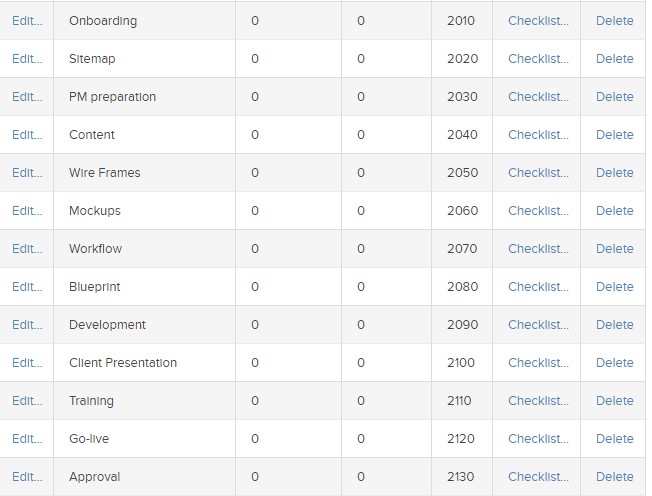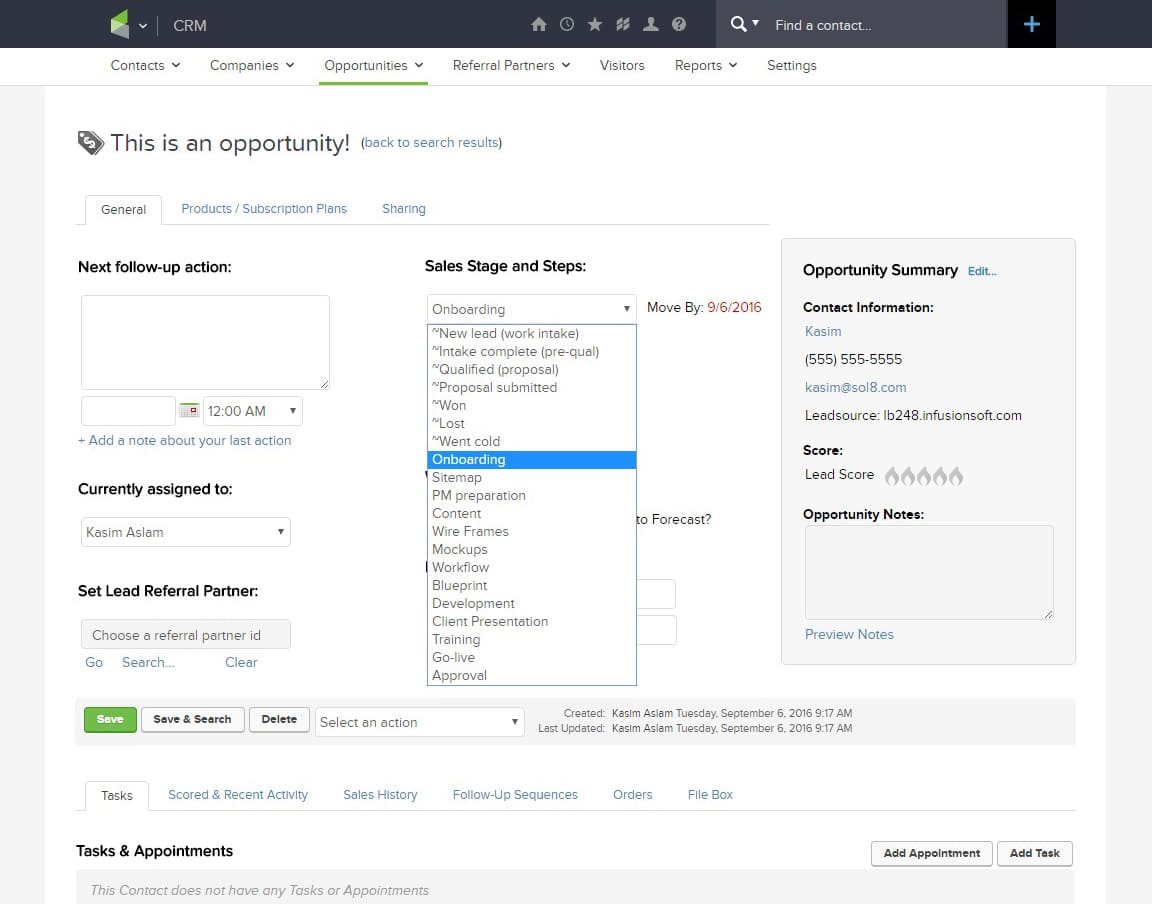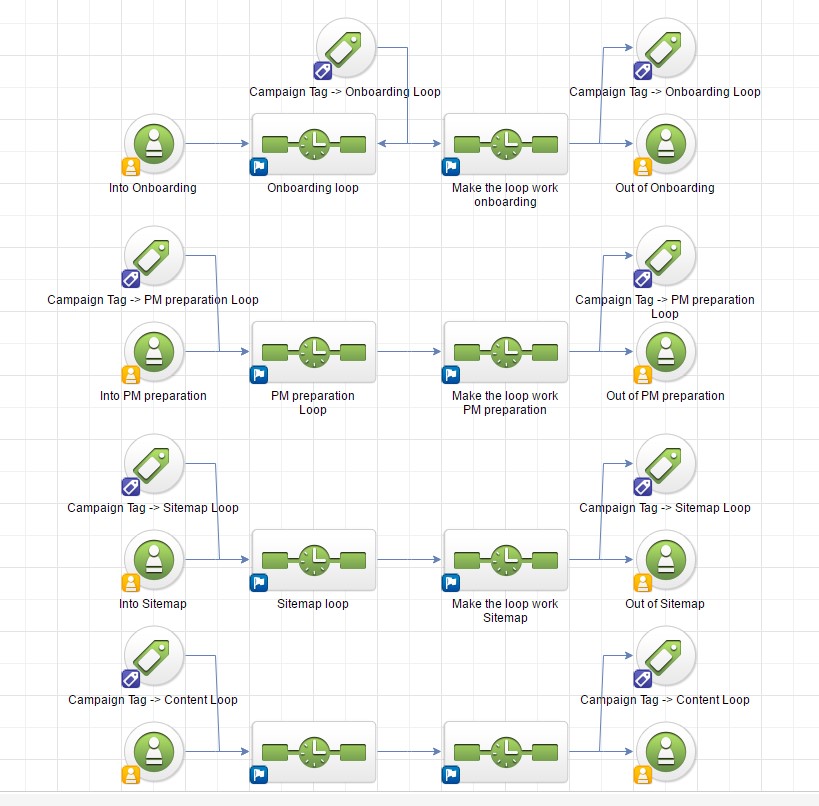One of the more extraordinary things about Infusionsoft as a tool is the ability to trigger automation using the “Opportunities” goal within the campaign manager. A pretty significant limitation of other automation tools is their inability to coincide with human processes. There has been a pretty clear line of demarcation drawn that separates automation from manual processes. While Infusionsoft isn’t the first tool to offer up a solution for this issue, they have created one of the more elegant solutions I’ve seen in terms of its simplicity and ease of use.
Common Challenges With Automation
Building process automation can be difficult from a logical perspective because there tends to be so much in the way of manual intervention. This can often lead to the simple decision to halt automation where a more intricate or complicated process begins and allow a project manager to take over completely to begin driving the project or process. The disadvantage with this model is you’re back to relying on human capital which is expensive and limited in scale.
Even for processes that require a significant amount of manual intervention, you can still maximize the efficacy of your human resources by automating around their required interjection. Doing so yields some significant value including the ability to track process management from within Infusionsoft, the ability to drive a process or project without having to completely encumber a project manager and the ability to maximize the value and impact of your human capital.
How Infusionsoft Makes it Easier
The Infusionsoft Opportunities Goal allows you to compartmentalize your automation around the areas that require manual intervention. I’ll use the example of building a website, a process we’ve automated within Infusionsoft. Obviously, website development as a process is far too robust to completely automate and will always require a significant amount of manual intervention. However, the process can be placed within the confines of an overarching automated timeline with the required manual intervention carved out at every necessary interval.
Automating the Process
The first step is mapping out the stages you’ll need to create in order to automate this process. For website development, I have separated the stages according to approval requirements. That means that every time the client needs to sign-off on something prior to moving forward, I create a new and separate stage. Here’s what the first three stages of basic web design process look like along with some additional context to give you a sense as to how the process works:
- Onboarding
- The onboarding process is heavily automated. It introduces the client to our process, establishes expectations, and submits a number of “asks” in the way of various forms.
- Moving forward is dependent upon their form completion and there are safeguard tasks built around any Client that isn’t completing the required forms. Reminders are built into the automation as well and allow for a slow and controlled roll out so we don’t overwhelm our Clients.
- Sitemap
- Once onboarding is complete, we need to develop a sitemap for the website. This is a process that requires a significant amount of manual intervention. The automated sequences initially trigger a request to schedule a call with the project manager in order to begin the process.
- We have built automated communication that explains what the process, why its important, what the Client should expect, and what to prepare for before their call.
- PM preparation
- After the sitemap is created and approved, we need to develop a project management blueprint and make some internal decisions about resources.
- This phase is a collection of tasks assigned to the project manager that utilizes the Client information (provided in the first two phases) to complete the roll out.
Once you have all of your stages mapped out, you’ll need to create them in the Sales Pipeline section of the CRM Settings area (CRM > Settings > Sales Pipeline). You’ll be asked to order your stages with a numeric value. I recommend using a 4 digit system of ordering. This will allow you to build multiple groups of stages and still keep everything organized. For example, instead of numbering the three stages I have outlined above as 1, 2 & 3 I have them labeled 2010, 2020 and 2030. Here’s the breakdown of how the nomenclature is meant to be read:
- The “2” is the number I have assigned for website development. If I see a process stage that starts with “2” I’ll know where it belongs. It’ll also ensure that everything that belongs to website development stays bundled together since Infusionsoft lists the stages numerically.
- The “01” is the actual stage in the process. I use a two digit value since some of our processes can have well over 10 stages. This will ensure you never run out of room.
- The “0” is meant to allow you room to make future process stage additions without throwing off your entire numbering system. For example, if I decided to add “Project gantt” between “Onboarding” and “Sitemap” I could number it 2015 and save myself the hassle of having to go through and change the order number for every stage in the sequence.
Here’s a handy dandy screenshot of what that looks like:

Once these stages have been defined, they’ll show up in the “Sales Stage and Steps” section of your Opportunities dashboard:

As you’re working with a client, you can transition them between stages through this dashboard! Each time you transition them to a new stage, you can have automation built out that speaks to every stage that the client is in. And, as I’m sure my advanced readers already know, the automation can also transition clients between stages automatically based upon available triggers as well.
Here’s a screenshot of what the campaign builder looks like for this particular process management campaign:

What’s cool about this ability to transition is that it is non-linear. That means that your clients can move back and forth between stages or even skip stages without incident. It all depends upon how you choose to use the tool. Unlike other, linear forms of automation, the opportunity goal enables your process to be dynamic and (where necessary) even repeatable.
Got All That?
This is just a cursory overview of the concept, but I hope it has give you some ideas about how you can merge your automated and manual processes into a more powerful automation machine. If you need any help or would like to discuss Solutions 8 building these types of campaigns out for you, please don’t hesitate to contact us!
Author
Patience is the former director of marketing and communications for Solutions 8. A phenomenal content writer, copywriter, editor, and marketer, she has played a prominent role in helping Solutions 8 become an authority in the Google Ads space. Patience is also the co-author of The Ultimate Guide to Choosing the Best Google Ads Agency and You vs Google.
 Patience Hurlburt-Lawton
Patience Hurlburt-Lawton










